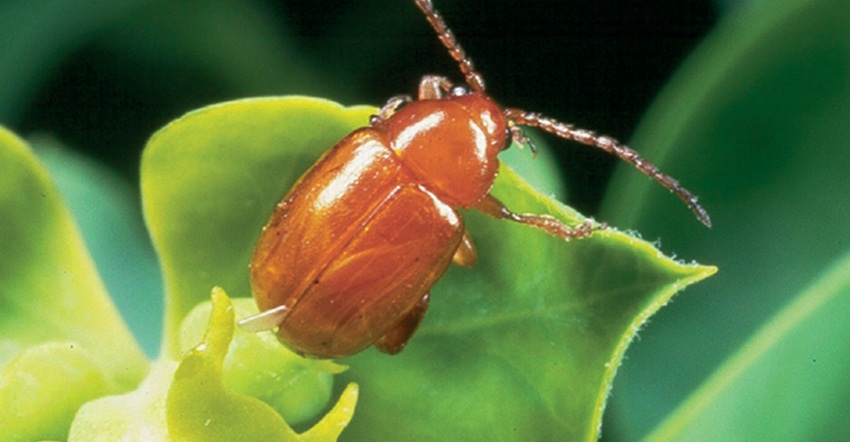February 15, 2018

Leafy spurge flea beetles can you help control leafy spurge and reduce herbicide use, says Pete Bauman, South Dakota State University Extension range field specialist.
“They are the best biological control agent to use [on leafy spurge] in the Dakotas,” he says. The beetles feed almost exclusively on leafy spurge, and in some cases can dramatically reduce leaf spurge populations.
Six things that Bauman and Rod Lym, North Dakota State University plant science professor, say you need to know to get the most from leafy spurge beetles are:
1. You have to release flea beetles in your pastures. They are not native. They don’t move great distances. Contact your county weed control specialist about collection dates for sites near you. You will likely be asked to help collect the beetles.
2. It can take as little as one year or as many as six years for a released population to firmly establish and significantly impact spurge. Three to five years is more common.
3. About a third of the time, beetle populations will increase enough to provide near complete control of leaf spurge. A third of the time, you get partial control. The rest of the time, the beetle population gets high enough to reduce spurge density. Poor control usually occurs in areas with very sandy soils, or where it is very shady and wet.
4. While established populations of the beetles will reduce leafy spurge to a level that won’t choke out grass, they won’t wipe it out. The beetles need a food source to survive. A balance will eventually be reached between the spurge and the beetles.
5. Use herbicides to keep leafy spurge in check as the beetles become established. Spraying around the perimeter of a large infestation is a good idea. NDSU research indicates applying herbicide from early September to mid-October on leafy spurge with an established flea beetle population provided increased control compared to using either flea beetles or herbicides alone. Also, herbicides that are applied to dense leafy spurge infestations will open the canopy, and may allow the beetles to establish in an otherwise unsuitable environment.
6. Grazing by sheep or goats after mid-August can increase leafy spurge control. Grazing removes excess trash from the soil surface, which provides a more suitable environment for egg and larvae survival. Fire may also be used to reduce cover, but don’t use controlled burns until after mid-August, when egg laying has been completed.
You May Also Like




